



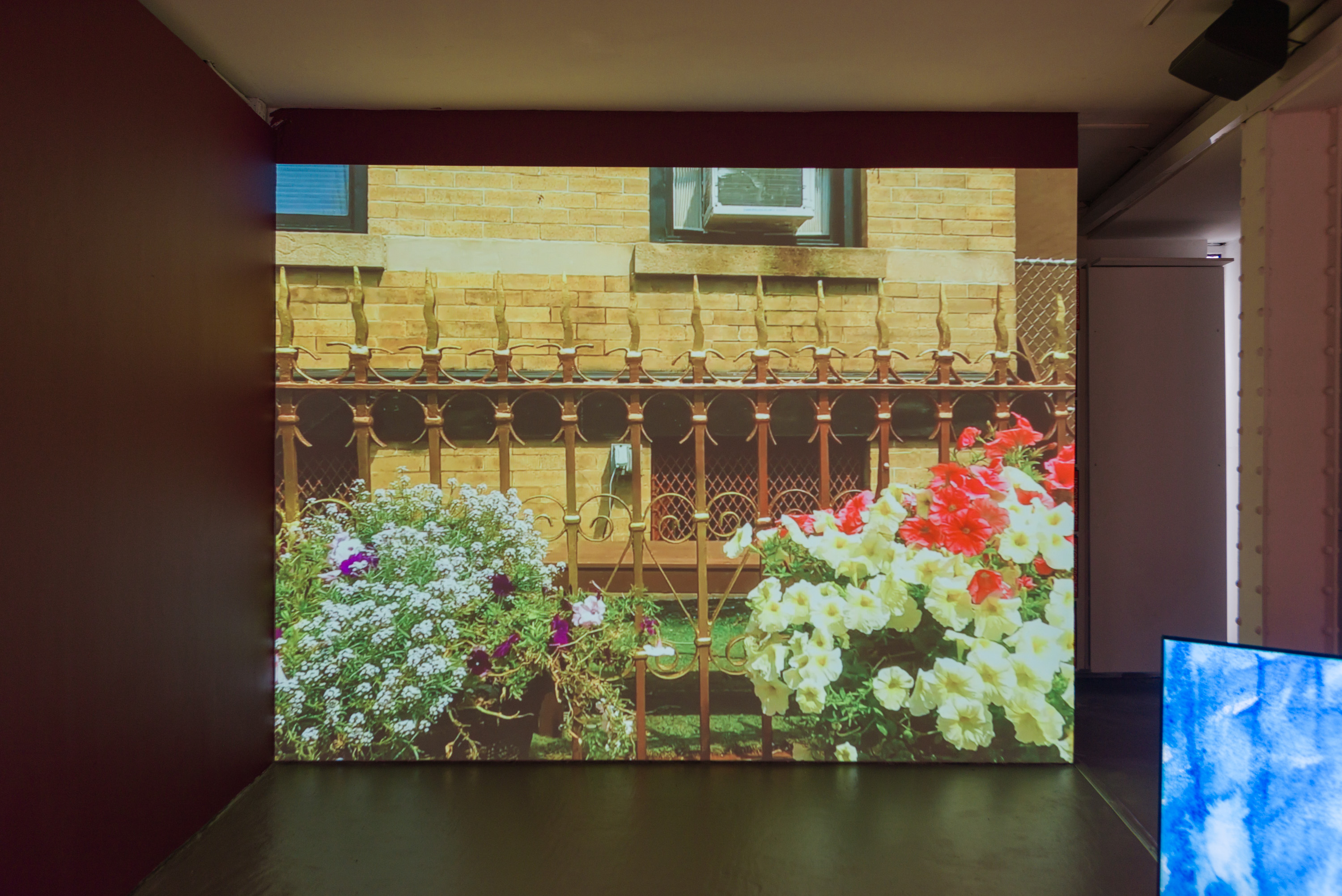
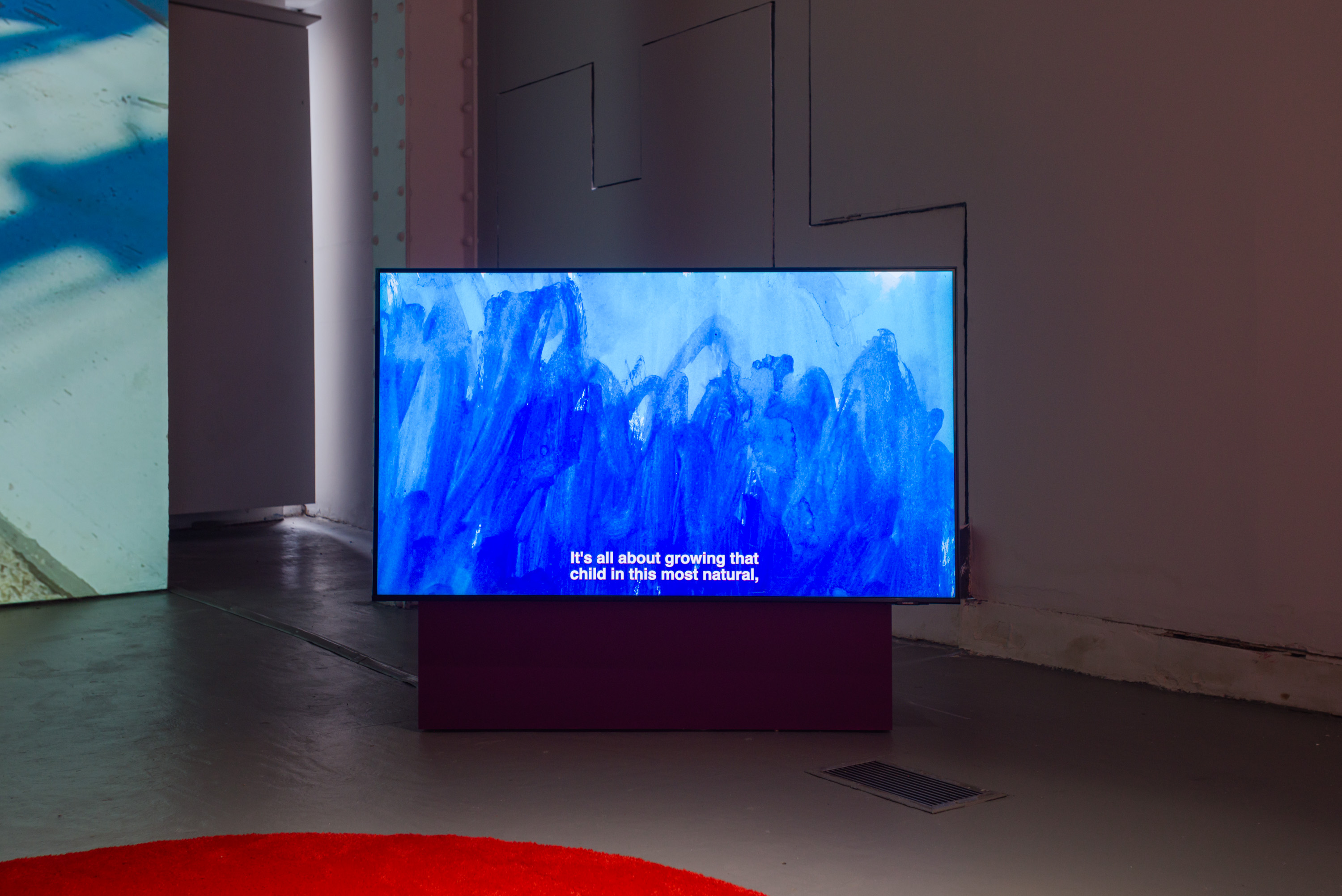



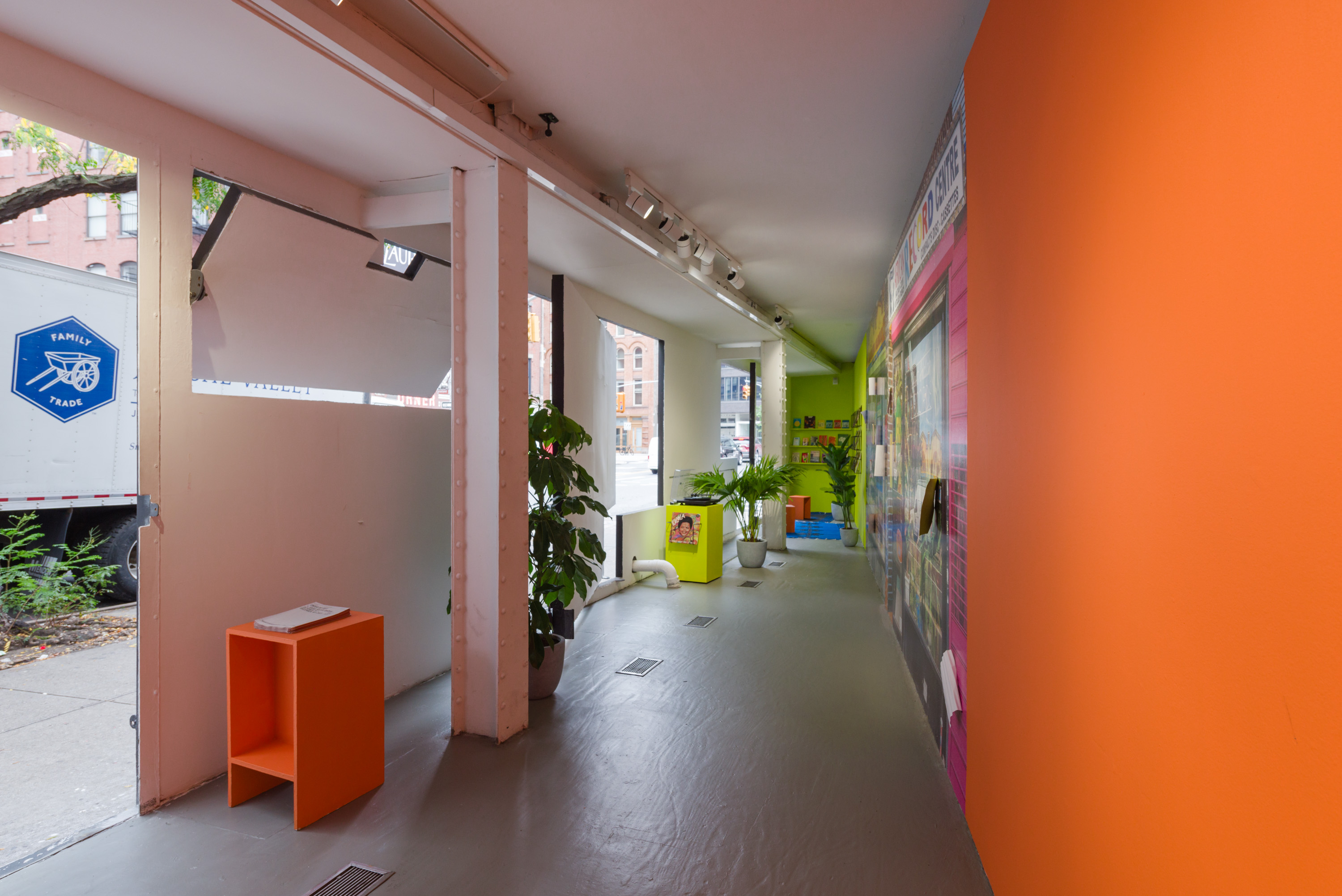




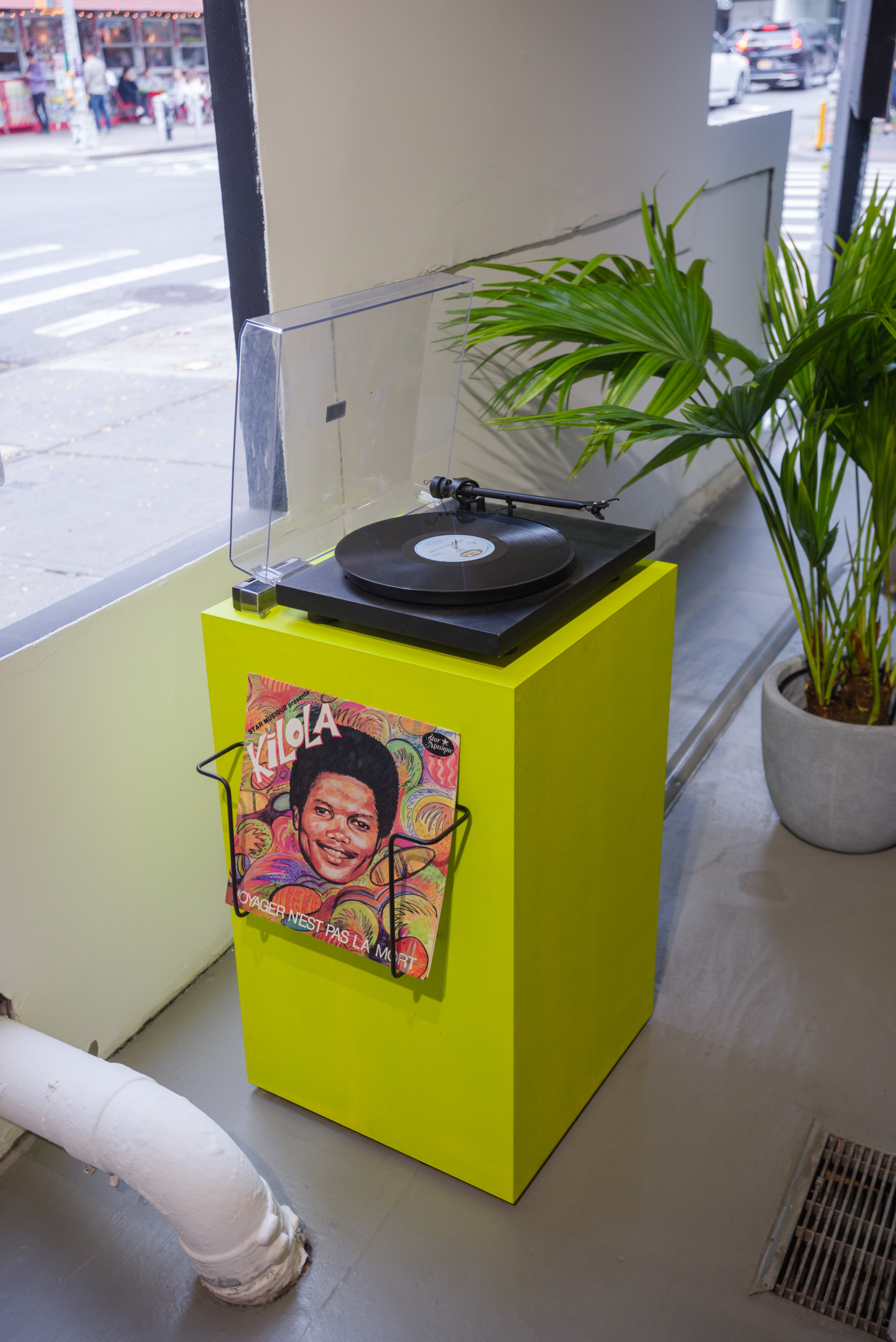


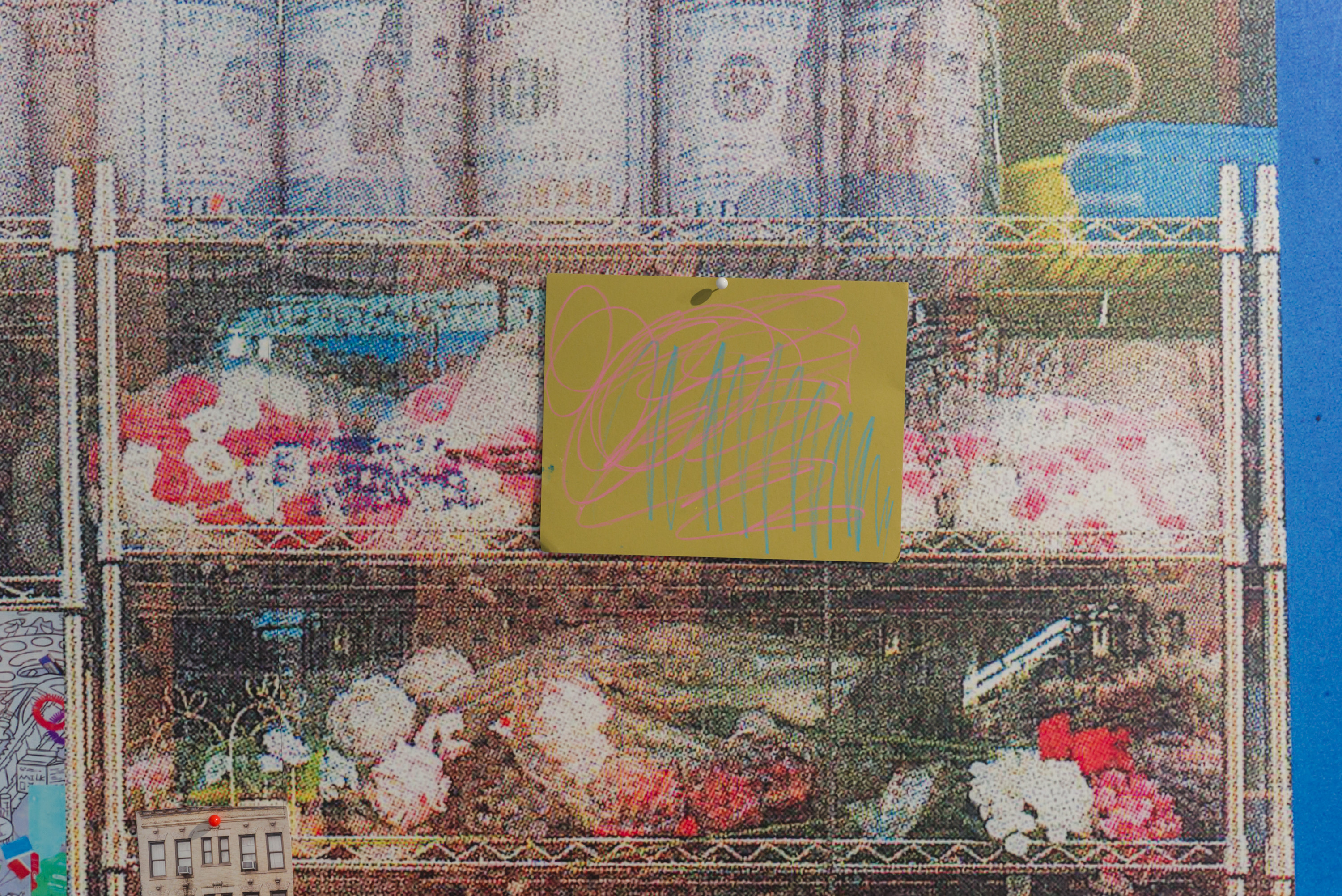



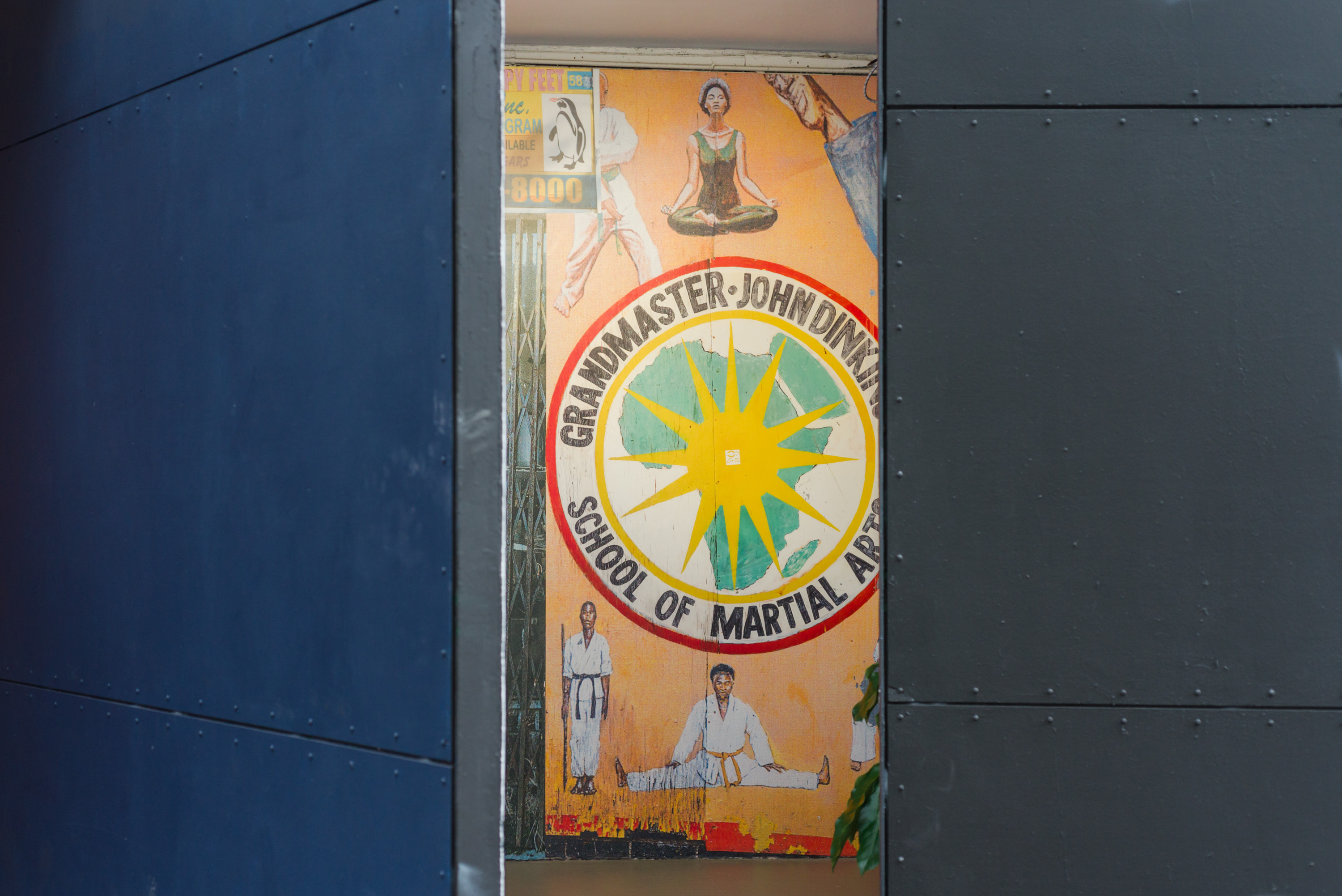

images by PJ Rountree, video by Ilana Harris-Babou
More information from Storefront for Art & Architecture:
In Under My Feet, artist Ilana Harris-Babou delves into her childhood memories, reimagining and reinventing the playful rituals of her Central Brooklyn upbringing. In this exhibition, she meticulously layers and transforms the sounds, colors, and textures of Prospect Lefferts Gardens, East Flatbush, and Crown Heights—neighborhoods predominantly inhabited by African-American, Afro-Caribbean, and West Indian immigrants. Through this creative process, Harris-Babou revisits and reconstructs her sense of home and belonging, engaging with themes of intimacy, witness, dispossession, and the possibilities for the sidewalks and storefronts of Nostrand Avenue, Church Avenue, and Flatbush Avenue.
Through a blend of sound, imagery, and video, Harris-Babou stages a vivid representation of her childhood neighborhood, bringing to light diverse notions of place hidden in plain sight. This immersive installation presents itself as a nostalgic journey to her youth—skipping over sidewalk cracks, perching on cellar gates beneath bodegas, and pondering the vibrancy of its towering signs. Harris-Babou layers the interior with an expansive streetscape, using the gallery as a place to celebrate intergenerational businesses and retail spaces that have served as hubs for liberatory pedagogies within Afro-diasporic communities.
Through a blend of sound, imagery, and video, Harris-Babou stages a vivid representation of her childhood neighborhood, bringing to light diverse notions of place hidden in plain sight. This immersive installation presents itself as a nostalgic journey to her youth—skipping over sidewalk cracks, perching on cellar gates beneath bodegas, and pondering the vibrancy of its towering signs. Harris-Babou layers the interior with an expansive streetscape, using the gallery as a place to celebrate intergenerational businesses and retail spaces that have served as hubs for liberatory pedagogies within Afro-diasporic communities.
“Myself the Way I Am” pays homage to Lenore Briggs and the Lefferts Gardens Montessori, where Black children were encouraged to shape their own sense of purpose and affirm their individuality within their community.
On the opposite end of the gallery, she recreates the protective havens provided by neighborhood institutions like the African Record Centre, offering a glimpse into the resources they have accumulated over the years and inviting audiences to choreograph their own worldbuilding experience through contemplation and curiosity. Under My Feet recognizes and reconnects with a vanishing landscape of self-determination in the face of gentrification and displacement, while claiming a future rooted in its enduring legacy.
On the opposite end of the gallery, she recreates the protective havens provided by neighborhood institutions like the African Record Centre, offering a glimpse into the resources they have accumulated over the years and inviting audiences to choreograph their own worldbuilding experience through contemplation and curiosity. Under My Feet recognizes and reconnects with a vanishing landscape of self-determination in the face of gentrification and displacement, while claiming a future rooted in its enduring legacy.

